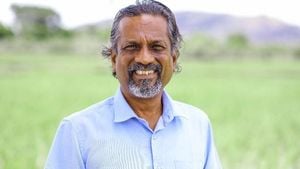The world is witnessing transformative updates to hydropower projects, enhancing energy resilience and security on multiple fronts. From innovative upgrades at Tasmania’s Meadowbank Dam to the expansive Snowy 2.0 initiative and the ambitious Lesotho Highlands Water Project, these engineering feats promise not just power generation but also significant advancements toward renewable energy commitments globally.
Hydro Tasmania recently announced the completion of significant spillway gate upgrades at Meadowbank Dam, costing $16 million. With extreme weather conditions testing the upgraded gates, the performances have been satisfactory, delivering improved management of potential flooding and energy generation efficiency. Community Engagement Advisor Jane Alpine emphasized the project’s community involvement, indicating the importance of Lake Meadowbank to local residents, agricultural sectors, and tourism.
“We are incredibly grateful for the support the community has shown us as we completed this important work,” said Alpine. The upgrades included replacing outdated hydraulic systems with lighter models from Europe, which streamline operations considerably. This was done carefully over two summers to limit disruption during busy holiday and agricultural periods. Hydro Tasmania also contributed to local park upgrades as part of their community commitment.
Meanwhile, the Snowy 2.0 project is taking bold steps nationwide to secure energy generation, tackling substantial tunneling challenges. Snowy Hydro’s CEO, Dennis Barnes, discussed plans to deploy additional tunnel boring machinery, prompted by new insights from ground testing around fault zones on the route. These efforts aim to keep the project on track for completion by December 2028. "The fault zone is not a surprise, but it is more challenging than anticipated," Barnes explained.
Significantly, Snowy 2.0 will become pivotal for Australia's renewable energy transition. The project boasts the capacity to supply three million homes with energy continuously for up to one week, providing much-needed backup for periods of insufficient wind or solar power. This is quite remarkable as most storage solutions today, like batteries, can only offer power for brief windows.
Barnes reinforced the necessity of this infrastructure, stating, “Snowy 2.0 is key to Australia’s energy future. We must succeed with this project.” A planning modification has been submitted for state approval concerning construction methodologies, ensuring transparency with local communities about potential changes.
Meanwhile, over on the African continent, the Lesotho Highlands Water Project also marks significant progress, celebrating the completion of tunneling phases for the Polihali Transfer Tunnel. On August 19, the Lesotho Highlands Development Authority marked the successful connection between the upper and lower intake tunnels, which is fundamental for transporting water from the extensive Polihali reservoir to the Katse reservoir, central to this ambitious project.
This breakthrough is not just about construction; it indicates the project is entering two major phases: the potential for impounding water within the Polihali reservoir and clearing debris from the remaining works. The lower intake tunnel enables water intake even during low reservoir levels, ensuring continuous operations. These developments underline the extensive planning and engineering catalyzing both national and regional advancements, helping Lesotho optimize its water and power resources sustainably.
Globally, these hydropower ventures demonstrate ingenuity and adaptability as they strive to meet current and future energy demands amid the pressing need for climate resilience. The successful upgrades and construction projects signify numerous benefits—from energy security to job creation and infrastructure improvements. It’s evident these projects are stepping stones toward achieving broader goals concerning energy independence and environmental sustainability.
These initiatives showcase the engineering triumphs available when innovation encounters necessity. Tasmania, Australia, and Lesotho stand at the forefront of this energy evolution, positively impacting not only local communities but also contributing to international energy resilience. While challenges abound, the collective knowledge gained from these projects sets the stage for future hydropower developments worldwide.
Hydropower projects are ever-evolving, demonstrating the ability of human ingenuity to adapt to environmental challenges and societal needs. With communities standing firmly behind their projects, countries are taking significant leaps forward. Looking at the resilience demonstrated through these hydropower advancements, it’s clear the future holds potential for cleaner, more sustainable energy solutions.



